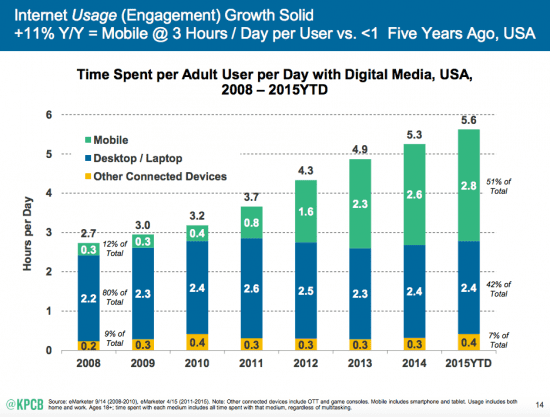When thinking about mobile friendly church websites, it may be best to start by looking at the past. It used to be that when a church needed a website they would have one developed and check it in a variety of different browsers. There a was a time when almost everyone used Internet Explorer (You are not still using IE are you?) but it was still important that you checked to make sure your church website worked well in Firefox, and Safari, and the fledgling Chrome browser. The reasoning was that we wanted the doors to our churches to be wide open to everyone, even those who browsed the internet with Opera.
In those days Internet Explorer had a whopping 85% of the market share, and yet we painstakingly ensured that websites looked perfect on all the other browsers in order to reach the most people for the kingdom.
 Fast Forward 8 years and it is a different world. Chrome is the browser of choice, Flash intros are all but extinct, and the majority of web surfing takes place on a mobile device. This last piece has been an enormous shift that has taken place in a very short time.
Fast Forward 8 years and it is a different world. Chrome is the browser of choice, Flash intros are all but extinct, and the majority of web surfing takes place on a mobile device. This last piece has been an enormous shift that has taken place in a very short time.
It would be a bad decisions to build a website that looks great in Firefox, but does not fuction well on Chrome today. So why are we giving mobile friendly church websites the cold shoulder like it is 2009? By not taking a mobile first approach churches are giving over half of all their website visitors a terrible online experience. They are slamming their doors closed!
Mobile design should not be an afterthought, but should be the first version of the site that we test if we are serious about reaching our communities.
The studies show that the younger the user the more likely they are to encounter your church website on a phone or tablet. Every church I talk to is clamoring to reach more young families and 20 somethings. Well, this is the place to start.
Here are a few things you need to look for to make sure you have a mobile friendly church website.
Mobile Friendly Church Websites Use Responsive Design
Responsive design is just like it sounds. A responsive website will will respond to the size screen it is being view on and will restack the content in a way that is optimized for that screen. When we build a website today we are really building four different layouts. One for desktops with large screens up to 4k, one for laptops with smaller screens, one for tablets, and one for phones with a tall and narrow display. A good web designer will think through this challenge before they start and will plan accordingly.
Retrofitting an old website to be responsive can be a time consuming and it not recommended. Make sure you next church website is a mobile friendly. Make it responsive.
 Mobile Friendly Church Websites Allow People To Use Their Fingers
Mobile Friendly Church Websites Allow People To Use Their Fingers
With a mouse you have the ability to hover over elements on the screen. That doesn’t work with fingers. Mobile friendly church websites will take this into account and will make sure that no mouse hovering is required.
The most likely culprit is your navigation. Several years ago we fell in love with drop downs in our navigation. They made it easy to organize lots of information on a church website. Drop downs can still be used, but when someone is on a mobile device your users need to be able to access your entire navigation without hovering.
Mobile Friendly Church Websites Do Not Use Flash
So many church websites still use flash as the primary language to deliver movement on the site. We still have people call us and refer to any moving part on the website as flash. Even worse, some churches build entire websites in flash. This must stop.
Flash is a language that is notoriously hardware demanding, and most phones do not support it without help from outside software. Movement is still important on a church website, but flash is not the way to accomplish this.
Mobile Friendly Church Websites Are Interactive On All Devices
When we originally started building church websites with mobile browsing in mind, the strategy was to build a separate website with a separate web address for people on mobile browsers. These were usually stripped down versions of the main websites, with just the bare essentials – A few ministry pages and some contact information. I remember clients saying things like – “Who would ever try to watch a sermon on a phone?”
Well as it turns out, lots of people would want to watch a sermon on a phone. Dare I say, most people would prefer watching on their phones or tablets while they do something else, as opposed to sitting in an office chair at their desks.
Today your site must do everything on your phone the same way it does it on your computer. People need to be able to see what’s happening, sign up for events, make a donation, and watch a sermon from their phones and not wish they were on their laptop instead.
It is time to open our doors wide, just as we have in generations before. If we are serious about reaching people in our communities, we have to get serious about mobile friendly church websites.
Do you have any mobile pet peeves that we missed? What have you seen out there? Let us know in the comments section.

